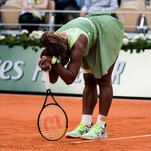Sports for Elderly People: Staying Active and Healthy in the Golden Years
Physical activity remains one of the most powerful tools for maintaining health, independence, and quality of life as we age. For elderly individuals, engaging in appropriate sports and exercise activities can dramatically improve physical function, mental wellbeing, and social connections while reducing the risk of chronic diseases and age-related decline. Understanding which activities are most suitable and how to approach them safely opens up a world of possibilities for active aging.
The Science Behind Exercise and Aging
Research consistently demonstrates that regular physical activity can slow, halt, or even reverse many aspects of age-related decline. The aging process naturally leads to muscle mass reduction, bone density loss, decreased cardiovascular efficiency, and reduced flexibility. However, targeted physical activities can counteract these changes remarkably effectively.
Muscle mass typically decreases by three to eight percent per decade after age 30, with acceleration after age 60. Resistance training and weight-bearing activities can not only prevent this loss but actually increase muscle mass in elderly individuals, improving strength, balance, and functional capacity. Studies show that seniors who engage in regular strength training can achieve muscle gains comparable to individuals decades younger.
Cardiovascular health benefits from aerobic activities are particularly pronounced in older adults. Regular aerobic exercise improves heart function, reduces blood pressure, enhances circulation, and increases lung capacity. These improvements translate directly into better endurance for daily activities and reduced risk of heart disease, stroke, and diabetes.
Bone health responds positively to weight-bearing and resistance exercises, with regular activity helping maintain bone density and reducing fracture risk. This is especially important for preventing osteoporosis-related injuries that can significantly impact independence and quality of life.
Balance and coordination improvements from appropriate exercise programs can dramatically reduce fall risk, which represents one of the most serious health threats for elderly individuals. Activities that challenge balance and proprioception help maintain the neuromuscular connections essential for stability and confident movement.
Low-Impact Sports Ideal for Seniors
Swimming stands out as perhaps the perfect sport for elderly individuals, offering comprehensive cardiovascular and strength training while minimizing joint stress. The buoyancy of water reduces body weight impact by up to 90 percent, allowing individuals with arthritis, joint pain, or mobility limitations to exercise comfortably. Water resistance provides natural strength training for all major muscle groups while the rhythmic nature of swimming promotes relaxation and stress reduction.
Water aerobics classes specifically designed for seniors combine the benefits of swimming with structured group activity and social interaction. These classes typically incorporate movements that improve flexibility, strength, and cardiovascular fitness while remaining gentle on joints and accessible to various fitness levels.
Walking represents the most accessible and widely practiced sport among elderly individuals. Beyond simple recreational walking, organized walking groups, hiking clubs, and walking sports like race walking provide structured activities with measurable goals and social components. Nordic walking, which incorporates poles similar to ski poles, engages upper body muscles and improves balance while maintaining the low-impact nature of traditional walking.
Cycling offers excellent cardiovascular exercise with minimal joint impact, particularly when using stationary bikes or tricycles that provide additional stability. Many communities offer senior cycling groups that combine exercise with scenic tours and social interaction. Recumbent bicycles provide back support and easier mounting for individuals with balance or mobility concerns.
Adapted Traditional Sports
Golf has evolved to become increasingly accessible to elderly players through equipment innovations, course modifications, and adaptive techniques. Modern golf carts reduce walking demands, while lighter clubs and improved ball technology can help maintain distance despite reduced swing speed. Many courses offer senior-specific programs, shorter tees, and flexible playing formats that accommodate varying abilities.
Tennis has been adapted for senior players through programs like Tennis for Seniors, which may use larger, slower balls, smaller courts, and modified scoring systems. These adaptations maintain the strategic and social elements of tennis while reducing the physical demands and injury risk.
Bowling remains popular among seniors due to its social nature and adaptability to various physical capabilities. Modern bowling alleys often feature lightweight balls, ramp systems for individuals with limited mobility, and bumpers that can make the sport more accessible and enjoyable regardless of skill level.
Pickleball has experienced explosive growth among elderly players due to its combination of tennis, badminton, and ping-pong elements on a smaller court with a lower net. The sport uses a perforated plastic ball that travels more slowly than a tennis ball, reducing reaction time requirements while still providing excellent exercise and competitive elements.
Group Fitness and Team Activities
Senior-specific fitness classes have proliferated in community centers, gyms, and senior living facilities, offering structured exercise in supportive group environments. These classes often incorporate elements from various sports and activities, including chair-based exercises for individuals with limited mobility, balance-focused programs, and strength training using resistance bands or light weights.
Tai Chi, while not traditionally considered a sport, provides many athletic benefits through its flowing movements that improve balance, flexibility, strength, and mental focus. This ancient practice has been extensively studied and proven particularly effective for fall prevention and overall wellbeing in elderly populations.
Yoga classes designed for seniors offer modified poses and use of props like chairs or blocks to make positions accessible while still providing flexibility, strength, and balance benefits. Gentle yoga styles focus on safe movement and breathing techniques that can improve both physical and mental health.
Dancing combines cardiovascular exercise with balance, coordination, and cognitive challenges while providing significant social benefits. Ballroom dancing, line dancing, and culturally specific dance forms offer various intensity levels and can accommodate different mobility levels.
Competitive Sports Opportunities
Senior sports leagues and tournaments provide competitive outlets for elderly athletes across numerous sports. The National Senior Games Association organizes competitions in dozens of sports, from track and field to swimming to team sports, with age categories that ensure fair competition among peers.
Masters athletics programs exist for virtually every sport, providing organized competition with age-group divisions and modified rules when appropriate. These programs often serve as motivation for maintaining training routines and provide goals that extend beyond basic fitness maintenance.
Local senior leagues for sports like softball, basketball, and soccer offer regular competition and team camaraderie. These leagues typically modify rules for safety and accessibility while maintaining competitive elements that many seniors find motivating and enjoyable.
Safety Considerations and Medical Clearance
Medical consultation before beginning any new exercise program is essential for elderly individuals, particularly those with existing health conditions or who have been sedentary. Healthcare providers can assess individual risks, recommend appropriate activities, and suggest modifications based on specific health status.
Proper warm-up and cool-down routines become increasingly important with age, as older muscles and joints require more time to prepare for activity and recover afterward. Five to ten minutes of gentle movement before exercise and similar cool-down periods can significantly reduce injury risk.
Hydration needs may be altered in elderly individuals due to decreased thirst sensation and potential medication effects. Extra attention to fluid intake before, during, and after exercise helps prevent heat-related illnesses and maintains optimal performance.
Appropriate footwear and equipment selection can prevent many common injuries. Well-fitted athletic shoes with good support, proper sports equipment sizing, and protective gear when appropriate all contribute to safer participation.
Recognition of warning signs such as chest pain, severe shortness of breath, dizziness, or unusual fatigue should prompt immediate cessation of activity and medical evaluation. Understanding personal limits and respecting them helps maintain long-term participation and prevents serious complications.
Building and Maintaining Motivation
Goal setting for elderly athletes often focuses on functional improvements rather than performance metrics. Goals might include walking longer distances without fatigue, improving balance confidence, or maintaining independence in daily activities. These personally meaningful objectives often provide stronger motivation than abstract fitness targets.
Social connections through sports activities provide powerful motivation for continued participation. Group activities, exercise partners, and team membership create accountability and enjoyment that make regular exercise more sustainable.
Tracking progress through simple methods like activity logs, step counters, or periodic fitness assessments can demonstrate improvements that might otherwise go unnoticed. Celebrating small victories and acknowledging progress helps maintain motivation over time.
Variety in activities prevents boredom and overuse injuries while ensuring comprehensive fitness development. Rotating between different sports and activities can maintain interest while addressing different aspects of physical fitness.
Conclusion
Sports and physical activities offer elderly individuals powerful tools for maintaining health, independence, and quality of life. The key lies in selecting appropriate activities that match individual interests, capabilities, and health status while prioritizing safety and enjoyment over performance. Whether through low-impact activities like swimming and walking, adapted traditional sports like golf and tennis, or group fitness programs, opportunities exist for virtually every senior to remain active and engaged.
The benefits extend far beyond physical improvements to include enhanced mental health, social connections, and overall life satisfaction. With proper medical guidance, appropriate activity selection, and attention to safety considerations, elderly individuals can continue enjoying sports and physical activities well into their later years, proving that age need not be a barrier to an active, fulfilling lifestyle.












